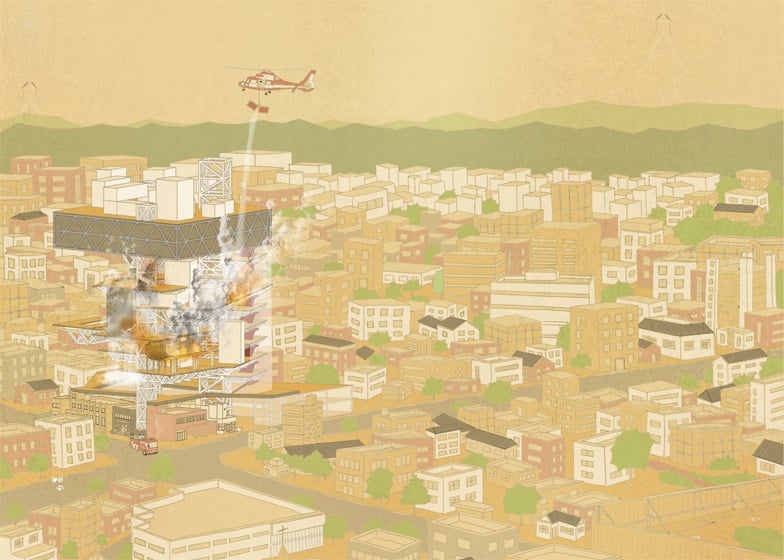Graduate shows 2015: Royal College of Art graduate Soon-min Hong has designed a theme park where, instead of rides, the attractions include opportunities to get caught up in a whirlpool or evacuate a burning building.
The Risk Theme Park – unveiled this week at the opening of the London school's end of year show – is an architectural proposal intended to increase the public's appreciation of risk-taking jobs like firefighting.
Soon-min Hong believes that people are no longer prepared to take daily risks that might prepare them for dangerous situations, which has led to emergency services being taken for granted.
In response, he has a designed an architectural structure where members of the public can experience hazardous scenarios – from standing on the edge of a cliff to being involved in a train crash.
"We live in an age obsessed with personal safety," explained Hong. "This creates a 'risk deficit' in society, forcing others to take on that risk on behalf of the public. Typically, these are members of the emergency services, notably the fire services who regularly place their lives in jeopardy to serve the public interest."
"My question is how can an architectural proposal increase the public's appreciation for risk-taking and promote it as a value?" he said.
The theme park is proposed for Daegu, South Korea – the city where, in 2003, an arson attack on the underground rail claimed the lives of 120 civilians. According to Hong, the city's firefighters are undervalued, badly paid and poorly equipped.
His high-rise structure would be located in the centre of the city and help members of the public prepare themselves for different kinds of accidents.
"Traditional adventure playgrounds encourage children to take risks in play, because it is beneficial for the child's development, yet as we grow older, this value is dismissed through education," he said.
"I think, through taking a risk in relation to the duties of firefighters, the public can realise how hard their duties are, and how valuable their efforts and sacrifices are," he added.
Resembling an amalgamation of different types of structures, the theme park would be constructed on top of an existing fire station and police station. There would be nine main levels, all assigned to a different type of risk.
On the first floor up, visitors would be invited to jump off a roof, while the third and sixth floors would offer different experiences of fire. The seventh floor would recreate a monorail crash, and the eighth floor simulate the experience of a mountain rescue.
Hong has also created a brochure providing details of the activities on each of the floors.
The project references existing education centres already constructed around South Korea, known as Safety Experience Centres. But unlike these, which are located out of town, Hong's city-centre proposal focuses on risk rather than safety.
"I visited the Daegu Safety Theme Park and experienced the two-hour course," Hong told Dezeen. "My design has a totally different approach. I think people would be more interested in a risk theme park than a safety experience centre."
The building's skeletal structure is designed to make the activities as visible as possible to the city's residents. This would also make it easier to replace sections that have been burnt or destroyed.
"Some of building can be destroyed in a fire as a simulation, and then rebuilt for the next experiment or simulation," added the designer.
Hong developed the design as his final project from the RCA's Architecture Programme, which is led by dRMM architect Alex de Rijke. He was part of the ADS3: Architecture and Activism unit, which addresses ways that architects can intervene in politics.
Other projects from Show RCA 2015 include a staircase that can be strapped around a tree and a glove for sculpting hard materials.

